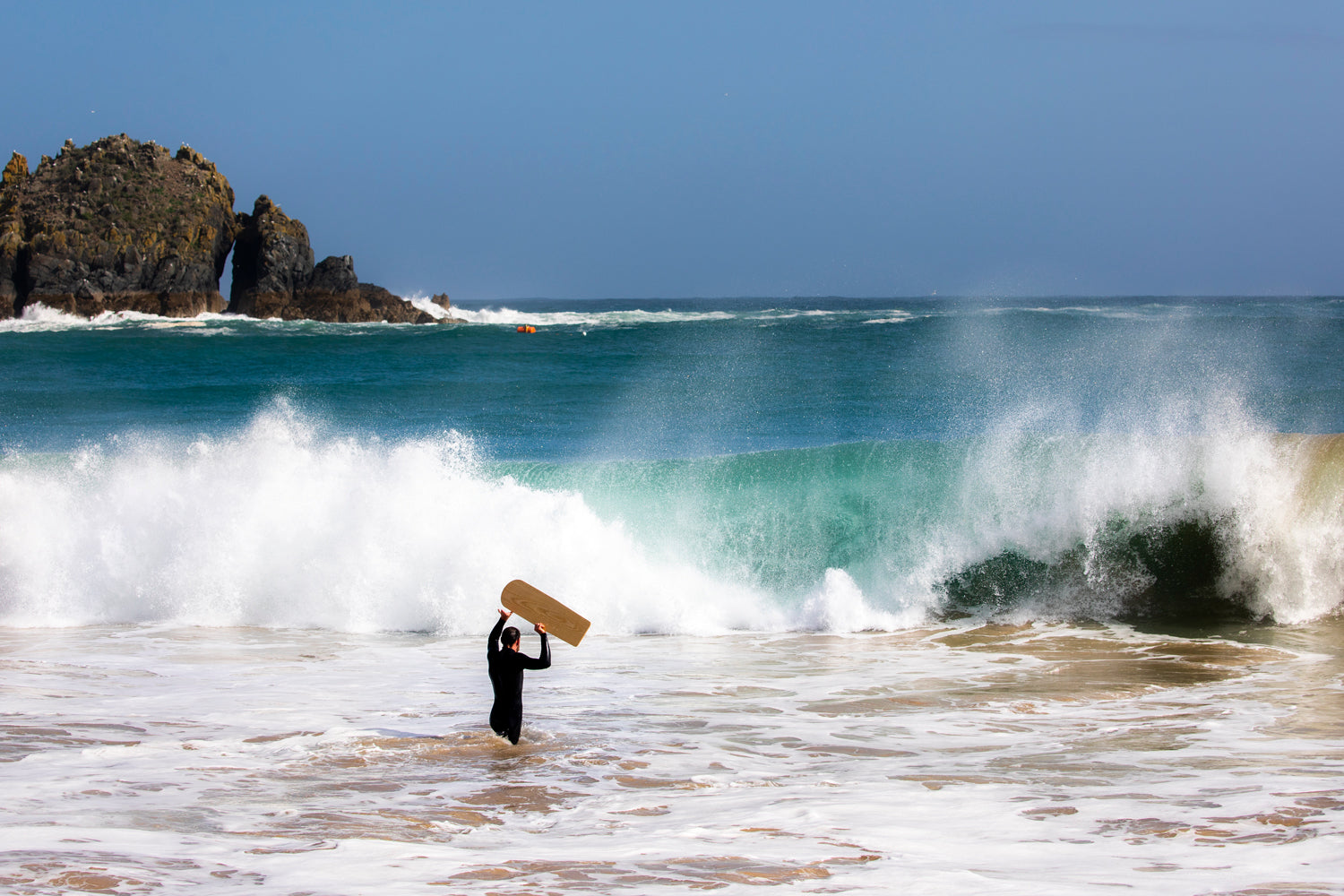Big Summer Shorebreak BellyBoard Test Day!
When it comes to designing and making our standard surfrider, traditional wisdom is hard to beat.
For riding atop the whitewash, or cruising across a glassy face, we’ve never found anything better than our 120cm long birch ply plank with a slightly lifted nose. That’s why the vast majority of our boards still carry the same exact design the Pearce family settled on almost a century ago.

However, we’re always looking to expand our offering to accommodate different styles and surfing tastes. So, over the last few years, we’ve been experimenting with subtle tweaks that might improve our boards’ performance in bigger, hollower and more powerful waves. The ultimate goal is to release a performance bellyboard – worthy of a place in the quiver of any barrel lover or surfer looking to mix things up – but still underpinned by the DP&F design ethos; simple, sustainable and really, really fun.

Recently we’ve been tinkering with different materials, veneers, bottom contours and shapes that might get us there. Once a load of prototypes are ready to go, our favourite way to do R&D is grab some mates, head to a wedging shorebreak and put the new sleds through their paces. So last week, as a lovely pulse of summer swell loomed, we rounded up some of the crew and did just that.

Our test quiver included various ‘nugget’ models, which are shorter than our standard surfriders, plus different variations of maple and oak veneer, birch laminate and cork wrap over ply, cork and solid wood cores. The main thing we were looking to access was how these different materials, lengths and bottom contours affect buoyancy, flex and hold in the most critical moments.

So after a few hours of getting rolled in a pounding shore break, what did the crew learn?
The first thing to emerge from our pasty-chomping debrief was that all agreed when you’re wearing fins and the waves are hollow, it really helps to have a shorter board.
“The only reason you need that length is to get into the waves,” explained alt-surf enthusiast Aidan. Longer boards are much better in the white water. But when you don’t need the surface area, less board means more hold in the tube, more manoeuvrability and more control.


One of the more out-there innovations was the addition of cork wings to the underside of one of the boards, creating deep channels and a concave tail. When dropping down a steep face, these wings act like the fin on a surfboard, holding you high on the wave and stopping you from slipping out. They also add strength, meaning the rest of the board can be made thinner without compromising durability. The conclusion was that a set of very subtle cork wings could be a great addition, allowing for controlled side slip, but providing hold when you need it.


When it comes to flex profile, the crew agreed it’s all about balance. Not enough and it makes it hard to scoop off the bottom into a steep wave face. But, too much and you can feel the board warp beneath you, pushing water away and slowing you down. Then there’s the durability to consider.
“We were testing to see how flexi you can go, and how rigid they need to be to keep the strength,” explained head DP designer Jamie. While we reckon our standard surfriders are almost unsnappable, Aidan managed to split one of the ultra-flexi, less fortified models as he drove it through an almost dry tube – a short but glorious ride that sent that particular model straight back to the drawing board. “Remember you’re not a crash test dummy,” his wife had apparently told him before he left the house, but what’s a man like that to do, given a barreling shorey and a plywood plank?



A week on and Jamie’s back in the workshop, applying what he learnt, cooking up a whole new set of mad design tweaks and almost certainly still pulling sand out of his ears.

















